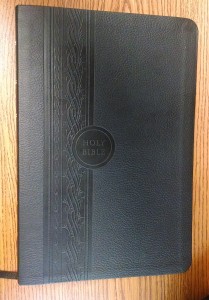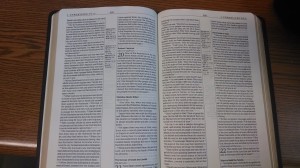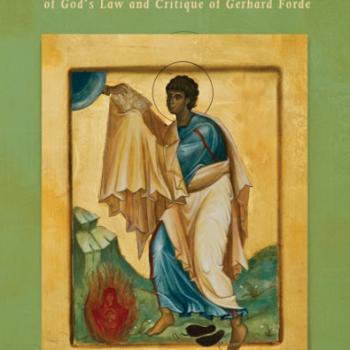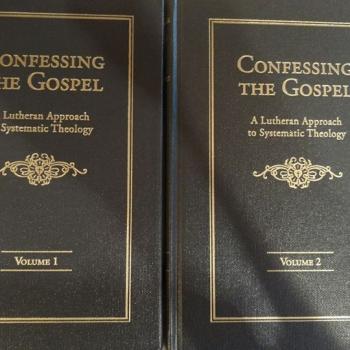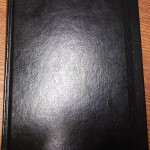I recently purchased a copy of the Modern English Version of the Bible. This translation was released in 2014 by Passio, which is an arm of Charisma Publishing House. It claims to be the most modern edition of the King James Bible. Though released by a charismatic publishing house, there doesn’t appear to be any particular charismatic bias in the translation itself, and the translators come from a variety of Christian traditions.
The Textual Foundation
The MEV is within the same tradition as the KJV. For that reason, it uses the textus receptus as its New Testament basis. Like most translations, it uses the Masoretic text for the Old Testament, though it occasionally utilizes parts of the Vulgate as does the King James (though such usage thankfully doesn’t seem to be as prominent). Personally, I prefer the Majority Text over the modern Critical Text. For that reason, I tend to favor translations that utilize the textus receptus which is similar (though not identical to) the Majority Text. There are, currently, no major translations of the MT. It is good to see a new translation that uses the TR, which differentiates the MEV from the NASB, ESV, etc. I would prefer that certain obvious errors in the TR would have been corrected, such as the inclusion of 1 John 5:7. There are, however, a few footnotes in such texts that mention the weak textual basis of such verses.
While there are occasional textual notes (such as in 1 John 5:7 and the pericope adulterae), they are mostly absent. One of the benefits of the NKJV is its extensive footnoting which explains the differences between the NU text, TR, and the MT. In this way, one can easily study the differences between these three different prominent textual traditions. The New King James, along with the original KJV, also puts added English words (which clarify the original Greek meaning) in italics. These two factors make the NKJV an extremely helpful study Bible; unfortunately, the MEV is missing this.
The Translation
Like the KJV and NKJV, the MEV is a formal correspondence translation. The translation philosophy is thus similar to the ESV and NASB, as opposed to the NIV and other dynamic equivalence translations. I prefer this translation methodology, because there is less room for the translators to place their own particular interpretations of texts into their work. This does also mean, however, that the MEV is not the best translation for one who is learning English, or a young child. The text is wooden in some places, but it does retain much of the beauty of the KJV.
The MEV is certainly indebted to the KJV, but it is not simply the KJV with updated language. It’s about as different from the original KJV as is the NKJV. Here are a couple verses from each of these translations for comparison:
Rom. 3:28
“Therefore we conclude, that a man is justified by faith, without the deeds of the Law.”- KJV
“Therefore we conclude that a man is justified by faith apart from the deeds of the law.”- NKJV
“Therefore we conclude that a man is justified by faith without the works of the law.”- MEV
John 3:16
“For God so loved the world that he gave his only begotten son, that whosoever believeth in him, should not perish, but have everlasting life.”- KJV
“For God so loved the world that He gave His only begotten Son, that whoever believes in Him should not perish but have everlasting life.”- NKJV
“For God so loved the world that He gave His only begotten Son, that whoever believes in Him should not perish, but have eternal life.”- MEV
These are just two random selections, but the similarities and differences between each of these translations is apparent. The MEV tends to use slightly more modern language than the NKJV in a number of places, while retaining the general style of the KJV. The MEV also tends to stick with traditional renderings of many words, like using “only begotten” for monogenes, rather than “one and only.”
There is one place, however, where the MEV completely mangles a text: 1 Peter 3:21. The text reads: “Figuratively this is like baptism, which also saves us now. It is not washing off the dirt from the body, but a response to God from a good conscience through the resurrection of Jesus Christ.” The text is now completely incomprehensible. The first half states that baptism saves, but the second states that it is a human response to God for cleansing the conscience. Compare this to the NKJV which states: “There is also an antitype which now saves us–baptism (not the removal of the filth of the flesh, but the answer of a good conscience toward God), through the resurrection of Jesus Christ.” In the NKJV, baptism is part of what constitutes a good conscience toward God. In the MEV, it’s a response of having a good conscience. The first half of this text demonstrates where the MEV is a much easier read than the NKJV, but the second half is theologically incomprehensible, and grammatically confusing.
The Formatting
The MEV comes in a very nice format. The cover is faux leather, and comes in multiple colors. It has a nice design on the cover, and comes in a nice slim-line format.
The pages are in a typical two column format, and the text is in a ten point font. The text is highly readable.
There are two primary frustrations I have with the formatting of the MEV. First, it’s a red letter Bible. This has always really irked me, as if the explicit words of Jesus in red somehow have a higher authority than the rest of Scripture. The second problem is that there is a heavy amount of bleed-through when reading, especially when the red letters are on the other side of the page. I’m not sure if this is because of the thinness of the page, or the particular type of paper being used, but it is somewhat distracting.
Conclusion
Overall, the MEV is a very useful and readable Bible. I will be using it often for my own Bible reading. However, due to its lack of textual notes, I don’t recommend it for extensive study. Instead, the NKJV is a better option.

